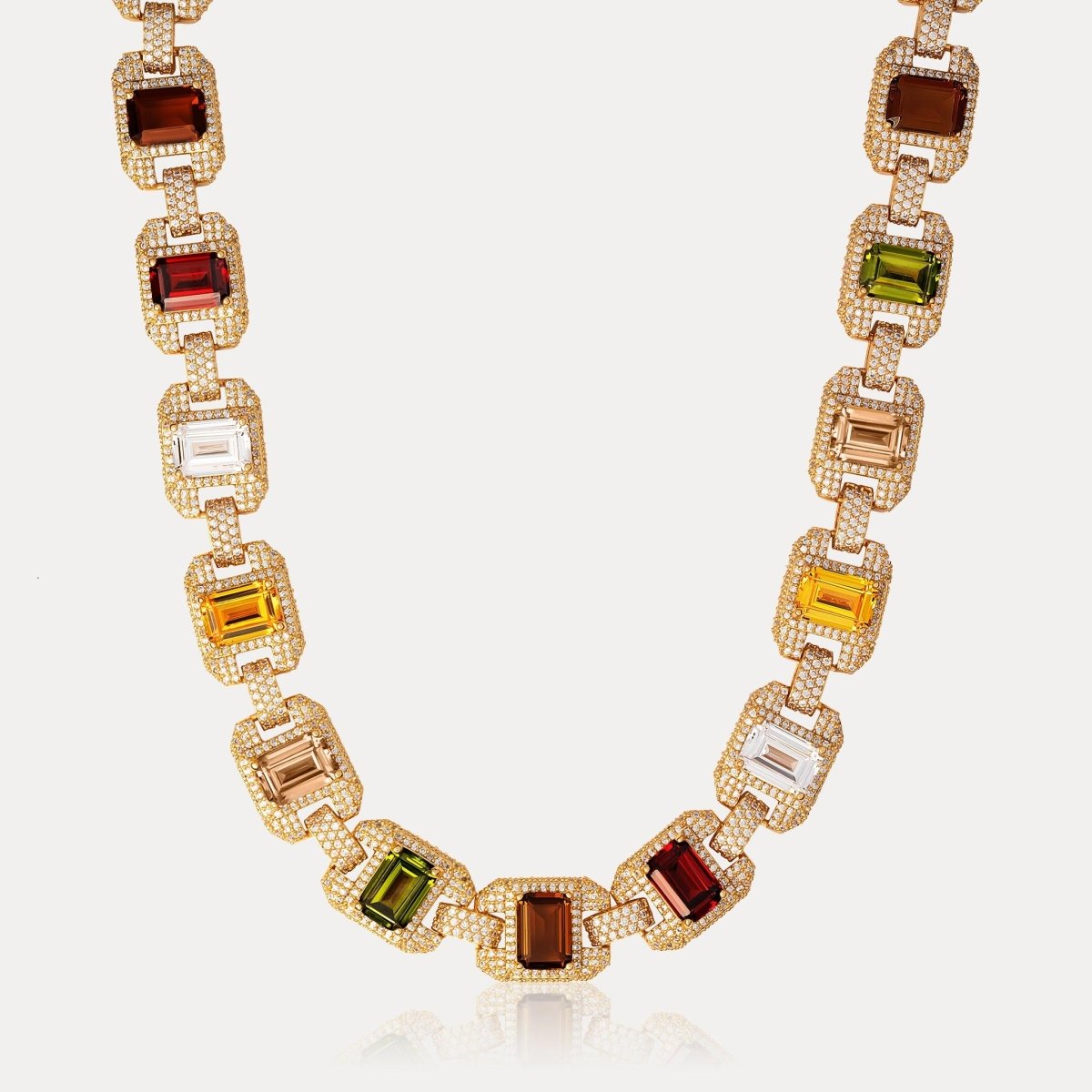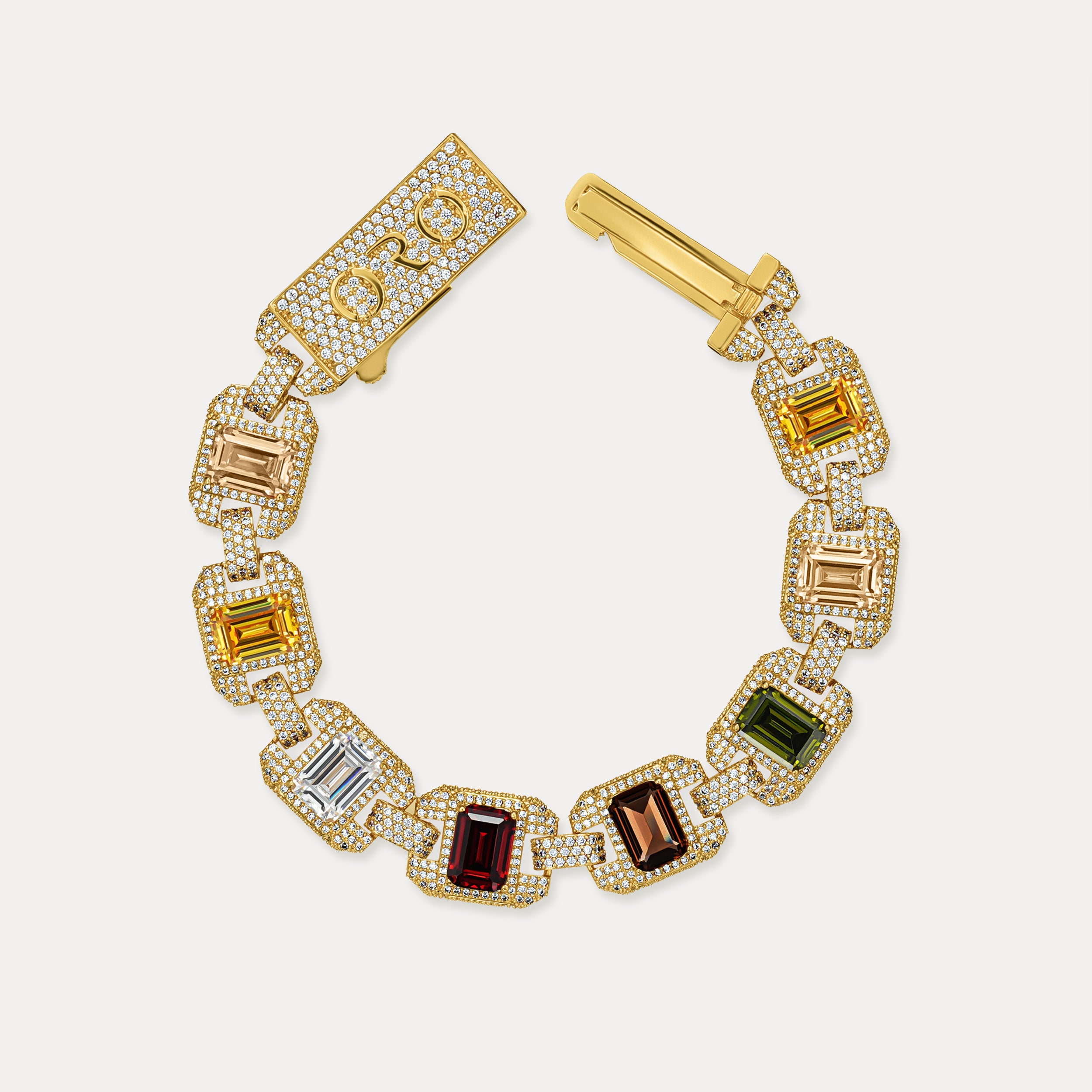What is platinum and what makes it unique?
Platinum, a precious metal with a rich history and unique properties, plays a crucial role in various industries, from automobile to jewelry, and even in medical and dental fields. This article will delve into the fascinating world of platinum, exploring its history, properties, mining and production processes, applications, and its potential as an investment.
Key Takeaways
- Platinum was discovered centuries ago and has been utilized in different periods in history, from ancient artifacts to modern technologies.
- The physical and chemical properties of platinum, including its durability, resistance to corrosion, and high melting point, make it a unique and valuable metal.
- Platinum mining and production is a complex process, involving the extraction of the metal from deposits and its refining for various uses.
- Platinum has a wide range of applications, notably in the automotive industry for catalytic converters, in jewelry for its luster and durability, and in the medical and dental fields for its biocompatibility.
- Platinum can be a valuable investment, with its market influenced by various factors. The potential risks and benefits of investing in platinum should be carefully considered.
The History of Platinum
Discovery of Platinum
Platinum was first discovered by Spanish conquistadors in the 16th century during their exploration of South America. However, they considered it an unwanted impurity in gold and silver mining, and it was often discarded. It wasn't until the 18th century that platinum gained recognition for its unique properties.
Platinum's rarity and resistance to corrosion made it highly sought after by scientists and jewelers. In fact, it was even used to create the crown jewels of Louis XVI of France. Today, platinum is considered one of the most precious and valuable metals in the world.
Early Uses of Platinum
During the early years of platinum's discovery, it was primarily used for decorative purposes. Jewelers were fascinated by its beautiful silver-white color and its ability to resist tarnish. Platinum was also used in the creation of luxury items such as cigarette cases and watch chains.
As the understanding of platinum's properties grew, it began to find applications in various industries. One of the early uses of platinum was in glassmaking. Platinum crucibles were used to melt and shape glass due to their high melting point and resistance to corrosion.
Another significant early use of platinum was in catalytic converters. Platinum's ability to facilitate chemical reactions made it an ideal catalyst for converting harmful gases in automobile exhaust into less harmful substances.
Platinum's unique properties and versatility continue to make it a valuable material in various industries today.
Platinum in Modern Times
Platinum has become an essential element in various industries due to its remarkable properties. One of the key applications of platinum is in the automotive industry, where it is used in catalytic converters to reduce harmful emissions. Additionally, platinum plays a crucial role in the jewelry and accessories market, known for its elegance and durability. In the medical and dental fields, platinum is utilized in various medical devices and implants due to its biocompatibility and resistance to corrosion.
Platinum's versatility and unique characteristics have made it an indispensable metal in modern society.
Properties of Platinum
Physical Properties
Platinum has several unique physical properties that contribute to its desirability and versatility. Density is one of the key characteristics of platinum, with a density of approximately 21.45 grams per cubic centimeter, making it one of the densest elements. This high density gives platinum a substantial weight and a solid feel, making it ideal for creating durable and long-lasting jewelry pieces.
Another important physical property of platinum is its malleability. Platinum is a highly malleable metal, meaning it can be easily shaped and formed into various intricate designs. This property allows jewelers to create intricate and detailed platinum jewelry pieces that are both visually stunning and durable.
Additionally, platinum has a high melting point of 1,768 degrees Celsius, making it extremely resistant to heat. This property makes platinum suitable for use in high-temperature applications, such as catalytic converters in automobiles and industrial equipment.
Platinum also exhibits excellent corrosion resistance. It is highly resistant to tarnish, rust, and other forms of corrosion, making it an ideal choice for jewelry that needs to withstand daily wear and exposure to various environmental factors.
In summary, platinum's physical properties, including its density, malleability, high melting point, and corrosion resistance, make it a highly sought-after metal for a wide range of applications.
Chemical Properties
Platinum has several unique chemical properties that contribute to its desirability and usefulness. One important property of platinum is its high resistance to corrosion, making it highly durable and long-lasting. This resistance to corrosion allows platinum to maintain its luster and appearance even after prolonged exposure to harsh chemicals or environments.
Another notable chemical property of platinum is its ability to catalyze chemical reactions. Platinum is widely used as a catalyst in various industrial processes, including the production of fertilizers, pharmaceuticals, and petroleum products. Its catalytic properties are due to its ability to facilitate the transfer of electrons and promote chemical reactions.
In addition, platinum has a high melting point, which makes it suitable for applications that require high temperature resistance. This property allows platinum to withstand extreme heat without melting or deforming, making it ideal for use in high-temperature environments such as furnaces and electrical components.
Overall, the chemical properties of platinum make it a versatile and valuable metal in various industries.
Unique Characteristics
Platinum possesses several unique characteristics that set it apart from other metals. One of its most notable properties is its exceptional resistance to corrosion, making it highly durable and long-lasting. Additionally, platinum has a high melting point, which allows it to withstand extreme temperatures. Its density is also remarkable, as it is one of the densest elements known. These distinctive characteristics make platinum an ideal choice for various applications in industries such as automotive, jewelry, and medical.
- Exceptional resistance to corrosion
- High melting point
- Remarkable density
Platinum's unique properties make it a valuable and sought-after metal in various fields. Its resistance to corrosion ensures that platinum-based products maintain their quality and appearance over time. The high melting point of platinum allows it to withstand intense heat, making it suitable for applications that involve extreme temperatures. Furthermore, the density of platinum contributes to its durability and strength, making it an excellent choice for manufacturing robust and long-lasting products.
Tip: When considering materials for applications that require durability, resistance to corrosion, and high melting points, platinum is an excellent choice.
Platinum Mining and Production
Platinum Deposits
Platinum deposits are found in various regions around the world, including South Africa, Russia, and Canada. These deposits are typically associated with igneous rocks, such as dunites and peridotites. The largest platinum deposits are located in the Bushveld Igneous Complex in South Africa, which accounts for approximately 70% of the world's platinum production.
Platinum deposits are often found in combination with other valuable metals, such as palladium, rhodium, and gold. This makes the mining and extraction process more complex, as these metals need to be separated and refined. The presence of these metals also adds to the economic value of platinum deposits.
Platinum mining operations involve both underground and open-pit mining techniques. Underground mining is typically used for deeper deposits, while open-pit mining is employed for shallower deposits. The mining process involves drilling, blasting, and extracting the ore, which is then transported to a processing plant for further refinement.
In recent years, there has been a growing focus on sustainable mining practices in the platinum industry. This includes minimizing the environmental impact of mining operations and ensuring the well-being of local communities. Companies are implementing measures such as water recycling, reclamation of mined areas, and community development programs to promote responsible mining.
Mining Techniques
Platinum mining involves various techniques to extract the precious metal from the earth. One common method is underground mining, where tunnels are dug deep into the ground to reach the platinum deposits. Another technique is open-pit mining, which involves the excavation of large open pits to access the ore. Both methods require heavy machinery and skilled workers to safely extract the platinum.
In addition to these primary mining techniques, there are also secondary methods used in platinum mining. These include hydraulic mining, where high-pressure water jets are used to dislodge the ore, and dredging, which involves the use of suction devices to collect the platinum-rich sediment from riverbeds or ocean floors.
It is important to note that mining platinum can have significant environmental impacts. The extraction process can result in habitat destruction, soil erosion, and water pollution. Therefore, responsible mining practices and environmental regulations are crucial to minimize these negative effects and ensure sustainable platinum production.
Refining and Production
Refining and production of platinum involves several steps to obtain pure platinum. The process begins with the extraction of platinum ore from the deposits. Once the ore is obtained, it undergoes various refining techniques to remove impurities and separate platinum from other metals. These techniques may include smelting, chemical leaching, and electrolysis.
After the refining process, the pure platinum is then shaped into various forms, such as bars, ingots, or pellets, depending on its intended use. The final step in production is quality control, where the platinum is tested for purity and consistency.
Table:
| Refining Techniques | Description |
|---|---|
| Smelting | Melting the ore to separate impurities |
| Chemical Leaching | Dissolving the ore in chemicals to extract platinum |
| Electrolysis | Using an electric current to separate platinum from other metals |
Note: The table above provides a summary of common refining techniques used in platinum production.
Tip: It is important to ensure that the refining and production processes are carried out with precision and care to maintain the high quality and purity of platinum.
Applications of Platinum
Automotive Industry
Platinum plays a crucial role in the automotive industry due to its unique properties. One of the key applications of platinum in this sector is in catalytic converters, which help reduce harmful emissions from vehicles. Catalytic converters contain a catalyst made of platinum, which facilitates the conversion of toxic gases into less harmful substances. This technology has significantly contributed to improving air quality and meeting environmental regulations.
In addition to catalytic converters, platinum is also used in spark plugs, sensors, and electrical contacts in automobiles. Its high melting point, corrosion resistance, and excellent electrical conductivity make it an ideal material for these components. The use of platinum ensures reliable performance and durability in various automotive applications.
Overall, platinum's presence in the automotive industry is vital for promoting cleaner and more efficient transportation.
Jewelry and Accessories
Platinum is highly valued in the jewelry and accessories industry for its unique properties and luxurious appearance. Durability is one of the key characteristics that sets platinum apart from other precious metals. Its strength and resistance to wear make it an ideal choice for crafting exquisite jewelry pieces that can withstand everyday use.
In addition to its durability, platinum's purity is another factor that makes it highly sought after. Platinum jewelry is typically made with a high percentage of pure platinum, often 95% or more. This high level of purity ensures that the jewelry maintains its luster and beauty over time.
Platinum jewelry also offers versatility in design. Its malleability allows skilled artisans to create intricate and detailed pieces that showcase the metal's elegance. From delicate necklaces and bracelets to stunning engagement rings, platinum jewelry offers a wide range of options for those seeking timeless and sophisticated accessories.
When purchasing platinum jewelry, it is important to look for reputable jewelers who provide certification of the metal's authenticity. This ensures that you are getting genuine platinum and not a lesser quality alloy. Investing in platinum jewelry is not only a fashion statement but also a long-term investment in a precious metal that retains its value.
Medical and Dental Fields
Platinum plays a crucial role in the medical and dental fields due to its unique properties. One of the key applications of platinum in these fields is in the manufacturing of medical devices and implants. Platinum is highly biocompatible, meaning it is well-tolerated by the human body and does not cause adverse reactions. This makes it an ideal material for creating implants such as pacemakers, stents, and artificial joints.
In addition to its biocompatibility, platinum is also used in dental applications. It is commonly used in dental crowns and bridges due to its durability and resistance to corrosion. The use of platinum in dentistry ensures long-lasting and aesthetically pleasing dental restorations.
Overall, platinum's unique properties make it an invaluable material in the medical and dental fields, contributing to advancements in healthcare and improving the quality of life for many patients.
Platinum as an Investment
Platinum Market
Platinum is a highly valuable precious metal that has a diverse range of applications. Its rarity and unique properties make it a sought-after commodity in various industries.
Supply and Demand: The platinum market is influenced by factors such as mining production, industrial demand, and investor sentiment. The limited supply of platinum, coupled with its increasing demand in sectors like automotive, jewelry, and medical fields, contributes to its market value.
Price Volatility: The price of platinum can be volatile due to factors like economic conditions, geopolitical events, and changes in investor sentiment. Investors should carefully monitor market trends and consider the potential risks and benefits before investing in platinum.
Investment Potential: Platinum can be an attractive investment option for those looking to diversify their portfolio. It offers potential for long-term growth and can act as a hedge against inflation and currency fluctuations.
Note: The information provided is for educational purposes only and should not be considered as financial advice.
Investment Opportunities
Investing in platinum can provide a unique opportunity for diversification in your investment portfolio. With its scarcity and increasing demand in various industries, platinum has the potential for long-term growth. Here are some key investment opportunities to consider:
- Platinum ETFs: Exchange-traded funds (ETFs) that track the price of platinum can be a convenient way to invest in this precious metal without the need for physical ownership.
- Platinum Mining Stocks: Investing in mining companies that specialize in platinum production can offer exposure to the industry's growth potential.
- Physical Platinum: For those who prefer owning physical assets, purchasing platinum bars or coins can be a tangible investment option.
It's important to note that investing in platinum, like any investment, carries risks. It's advisable to conduct thorough research and seek professional advice before making any investment decisions.
Risks and Benefits
Investing in platinum carries both risks and benefits. Here are some key points to consider:
-
Market Volatility: Like any investment, the price of platinum can be volatile, which means that its value can fluctuate significantly over time.
-
Supply and Demand: The price of platinum is influenced by factors such as mining production, industrial demand, and economic conditions. Changes in supply and demand can affect the price of platinum.
-
Diversification: Including platinum in your investment portfolio can provide diversification, as it is a different asset class than stocks or bonds.
-
Inflation Hedge: Platinum has historically been considered a hedge against inflation, as its value has tended to increase during periods of high inflation.
-
Long-Term Potential: Some investors see platinum as having long-term potential due to its use in various industries, such as automotive and medical.
-
Liquidity: Platinum is a relatively liquid asset, meaning that it can be bought and sold easily.
Keep in mind that investing in platinum, like any investment, involves risks and it's important to do thorough research and seek professional advice before making any investment decisions.
Conclusion
In conclusion, platinum is a rare and valuable metal that has unique properties and uses. Its resistance to corrosion, high melting point, and conductivity make it ideal for various industrial applications, including jewelry, electronics, and catalytic converters. Platinum's scarcity and durability contribute to its high price and desirability. As the demand for sustainable technologies and luxury goods continues to grow, platinum will remain a sought-after material in the global market.
Frequently Asked Questions
What is the history of platinum?
Platinum has a rich history that dates back to ancient times. It was first discovered by the indigenous people of South America, who used it for decorative purposes. In the 18th century, platinum was introduced to Europe and gained popularity among royalty and the wealthy. Today, platinum is widely used in various industries and is considered a precious metal.
What are the physical properties of platinum?
Platinum is a dense, malleable, and ductile metal. It has a silvery-white color and a high melting point. It is also highly resistant to corrosion and tarnish, making it ideal for use in jewelry and industrial applications.
What are the chemical properties of platinum?
Platinum is a noble metal, which means it is resistant to oxidation and corrosion. It is also highly catalytic, making it useful in various chemical reactions. Platinum can form complex compounds and is often used as a catalyst in the production of chemicals and fuels.
What are the unique characteristics of platinum?
Platinum has several unique characteristics that set it apart from other metals. It has a high density, making it heavier than most other metals. It is also highly ductile and can be drawn into thin wires. Additionally, platinum has excellent electrical and thermal conductivity, making it useful in electrical components and thermocouples.
How is platinum mined and produced?
Platinum is primarily mined from underground deposits. The mining process involves extracting the ore from the ground and then separating the platinum from other metals and impurities. Once the platinum is extracted, it undergoes a refining process to remove any remaining impurities. The refined platinum can then be used in various applications.
What are the applications of platinum?
Platinum has a wide range of applications. It is commonly used in the automotive industry for catalytic converters, which help reduce emissions. Platinum is also highly valued in the jewelry industry due to its durability and rarity. In the medical and dental fields, platinum is used in implants, pacemakers, and dental crowns.
Best Sellers



















































1 comment
Have questions. Open your human sales response only. Thx
Ba
Leave a comment
This site is protected by hCaptcha and the hCaptcha Privacy Policy and Terms of Service apply.